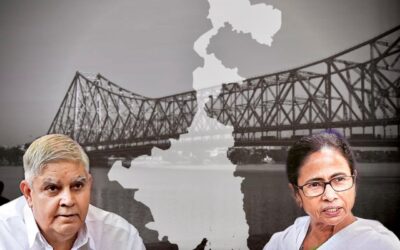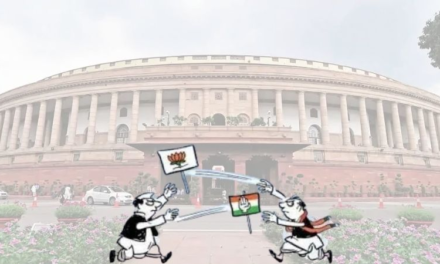The Spoken word


Sanjoy Ghose
Once the legendary Tej Bahadur Sapru was arguing before Sir Shah Mohammed Sulaiman, who was known in the Bar as a “talking judge”. Chief Justice Sir Grimwood Mears, sitting in the next court, wanted the assistance of the great Sapru. He inquired from barrister Sir Charles Ross Alston, who was present in his Court, as to Sapru’s whereabouts. Alston replied,
“My Lord, he is listening to Sir Shah Mohammed Sulaiman in the adjoining court.”
I am a fossil. When I studied the Legal Methods Course in Law School, Gorbachev was still presiding over the Supreme Soviet and was just about to be ousted in a coup only to be saved by Borris Yeltsin. Nelson Mandela was safely locked up in Robin Island and Saddam had just fought his War with Bush and was smarting having to withdraw from Kuwait. I could go on in the “we didn’t start the fire, it was always burning” style of Billy Joel but I think you get the point.
More importantly, picture my law school life, indeed the life of the whole nation, with no cell phones, no internet, no emails, no Facebook, and no Twitter! Most importantly my University was a new legal experiment, merely a few years old and the WhatsApp University was decades away from being founded.
Back to my Legal Methods Class those many years ago. We were taught that a judicial pronouncement has two components. The Ratio Decidendi, the actual operative part of a judgment, and the Obiter Dicta, the general observations in judgment which might throw a searchlight on the judicial reasoning but are not binding or determinative parts of the judgment. Teaching us this distinction, our sadistic professors, like the Roman Masters of the Colosseum would throw early Christians before beats for the entertainment of the citizens, would subject us to term examinations where we had to struggle through In Re Delhi Laws Case (a seven-judge constitution bench judgment of the Supreme Court where each Hon’ble Justice delivered a separate judgment, not in agreement with the brother judges) to answer what was the ratio decidendi.
It was an era when the media monopoly of the state-controlled Doordarshan and All India Radio was just slowly giving way to cable television. FM radio was also a few years away. An era where laptops and palmtops were a fantasy and the pager was the recent rage. Cocooned in our law school library for the real-time action playing out in courts-and trust me while I was pretending to ‘study’ law for five years, historical cases of constitutional importance were being argued and decided in our Constitutional Courts. Bommai, Ayodhya, Second Judges Case, and Indra Sawhney to just name a few-we had only the sterile law reports, commentaries, and back issues of the Economic and Political Weekly for company and guidance. Often it would take days if not weeks for information from courts to trickle in and inform our discussions.
Needless to add, in our world till then, the written judgment was all that was of consequences. CourtRooms and the goings-on therein were as remote for us law students as say the proceedings in the Sistine Chapel by the College of Cardinals to a choir boy!
My first brush with the importance of the spoken word was when I was in a packed courtroom of the Chief Justice of India when tension, anguish, and anticipation hung in the air as a diminutive Justice Khare sat to hear the petitions of the Gujarat Riots that were being taken up for urgent orders. The court was directly questioning an officer on the steps being taken to contain the carnage when he orally observed in court that there appeared to be complicity between the state and rioters. It was then that I for the first time understood the impact of the spoken word of the Court. It shook me out of the complacent world of ratio decidendi and obiter dicta that a law school education lulled me into.
Now cut to the present.
A Court is a product of the technology of the times. Remember that many of our laws still prescribe “beating of drums” as a means of communication of judicial orders. The world and the court have to keep up with the galloping technological strides. Now we live in a digitally connected world. We live in the world of social media and live-tweeting of court proceedings. Today the law student does not have to even visit her library. The virtual library is just a press of a finger away. All that comes between her and her quest for knowledge is a search button. In the world of Bar and the Bench, Livelaw and Leaflet, the Courtroom is at her doorstep. The riveting court proceedings are live-tweeted in real-time and almost are as exciting as sports commentary. Today’s millennials may not have the patience for the written word to be out. The oral comments of the court live-tweeted have an electrifying impact. They get amplified on social media and even trends on Twitter.
It is in this perspective, one must appreciate the “interventions” from the Court and their significance. In the United States, the Supreme Court, for instance, allotted only half-hour to each side is, and more often than not, even that limited time is not available to counsel as they are bombarded by queries, comments, and interventions by the Court.
The United States Supreme Court has so far resisted live streaming of proceedings. Many courts of that country are now permitting live streaming. Many will remember the electrifying live proceedings moderated by Baroness Hale as she steered the United Kingdom’s Top Court through the Brexit legal challenge.
In India also there has been a demand for live streaming of judicial proceedings. The Indian Supreme Court in Swapnil Tripathi v Supreme Court (2018) has weighed in in favor of public streaming. We still are waiting for norms to be put in place. During the pandemic, the Gujarat High Court Chief Justice took the bold step to have his court proceedings live-streamed on Youtube.
The naysayers who advocate the status quo also have valid points in opposition. Judges have shared the view that often they make a point to canvass a response for a lawyer. Like a “devil’s advocate” -a person deputed to aid the canonization of a too-be saint who purposely asks difficult questions or adverse positions only to elicit the truth. These observations may not be what the Court actually believes and may not even ultimately have a bearing on the final decision. So it is contended that live streaming or reporting such observations would not only amplify an inaccurate perspective but may also inhibit judges from actually making such observations which otherwise are essential in the process of justice. From the Bar too, there is resistance from certain quarters. Some lawyers point out that often lawyers do not press the multiple legal points set out in their pleadings as they are aware of their inherent weaknesses. Also, as officers of the court, many a time, lawyers, especially government counsel, in fairness often concede points of law and fact. The condition is that such concession is not attributed to the conceding lawyer. It is argued that live streaming legal proceedings would inhibit lawyers from making such concessions.
While these are significant issues, the overwhelming public interest in favor of transparency of proceedings far outweighs such considerations.
Concomitant with public proceedings is also the significance of the “oral observations”. As a tool of justice delivery often judges use the “oral” word. Any practicing lawyer will tell you about many instances where the Court has not formally passed any order, it has orally asked a party to do or no to do something. For example, not demolishing a property or disconnecting electricity. Often judges may not be inclined to put something in order or may find a legal inhibition in doing so but yet feels the cause of justice calls for some oral observations to be made to bring an errant party on track or to send a message out to the larger public.
It is in this context that the latest observations of the Madras High Court Chief Justice’s Bench on the recklessness of the Election Commission of India must be appreciated. It was only after its observation that the Commission would be perhaps chargeable for murder on account of not enforcing pandemic protocols during the recently conducted state elections and similar brickbats from the Calcutta High Court that the Commission attempted some belated course correction. The comments were widely reported on social media and front-paged by mainstream papers. The Commission moved the Court to restrain the media from carrying such reports. The Madras High Court was unmoved.
More sensitive to judicial criticism than to the lives of voters risked by the mass election rallies, the Commission rushed in appeal to the Top Court. In a welcome development, the Supreme Court bench of Justices Chandrachud and Shah repelled the Commission’s challenge to the High Court order stating that the media should be able to report everything, including oral observations of courts, to ensure accountability. The Court said that “We do not want to demoralize our High Courts, they are vital pillars of our democracy.”
Yale President Kingman Brewster had once said, “While the spoken word can travel faster, you can’t take it home in your hand. Only the written word can be absorbed wholly at the convenience of the reader.”
So today’s law student in her Legal Method’s class has a greater challenge. In addition to the writing, she also has to grapple with the spoken word!
Author Sanjoy Ghose is a Senior Advocate of the High Court of Delhi.
(The opinions expressed in this publication are those of the author/s. They do not purport to reflect the opinions or views of The Policy Observer or our members.)
Related Articles
Privatization of Liquor: A Look Into the Loopholes of The Policy
The division of the city was done into 32 zones and licenses were based on the same. In June 2021, the tenders were issued for the application of L-7Z and L-7V licenses. The office of commission of the excise government of the national capital issued terms and conditions for the grant of licenses.
The Information Technology Rules, 2021- A Constitutional Scrutiny
A law prescribing the procedure for depriving a person of his ‘personal liberty has to meet the requirements of Article 19 and if not shall be struck down as arbitrary under Article 14. Liberties and restrictions should run parallel to each other. One overpowering the other would distort the fair working of the constitutional machinery.
Gubernatorial impropriety
The office of the Governor is slowly and steadily being converted into an extended political branch of the central government. The scale and scope this time around are more than ever before! Are we ready for the implications this will have on National Unity and the dent it will cause to the constitutional principles of Cooperative Federalism, Constitutional Morality, and Democracy?








